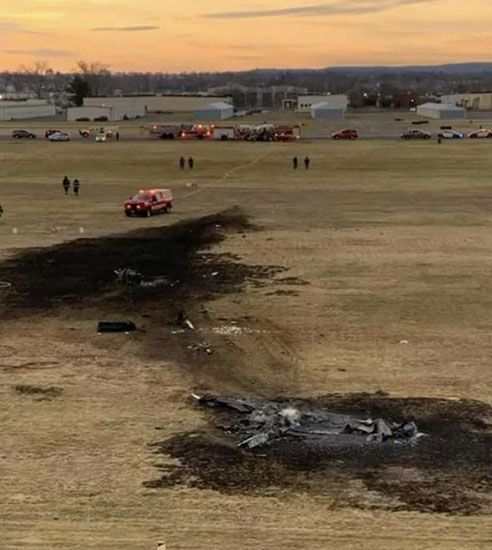During a crash sequence, an aircraft is called on to perform its final design feature—absorbing as much of the impact energy as possible and not transmitting those forces to its occupants as we’ll as not catching on fire because of a fuel system breach.
For obvious reasons, the subject of post-crash fires gets the undivided attention of pilots.
We have been curious about the risk of post-crash fires in composite structure airplanes and raised the subject when we visited Cirrus shortly after the SR20 was certificated. We came away impressed by such things as the location of the fuel tanks—between the wing spars some distance from the cabin—and routing fuel lines where they were protected by robust structural components. We also noted that the availability of a ballistic whole-aircraft parachute was likely to reduce the number of impact events serious enough to breach fuel tanks or lines, further reducing the risk of post-crash fire.
With composite structure airplanes now a common fact of general aviation life, we decided to take a look at available data to begin to get a feel for the risk of post-crash fires in composite aircraft.
We first looked for test data on flammability of aircraft composite structure and reviewed a 2007 DOT/FAA report of testing it conducted: Flammability Properties of Aircraft Carbon Fiber Structural Composite. We learned that the composite burns primarily from the vaporization of its resin. Further, “the fibers create an insulating, char-like structure that causes a reduction in the internal heating and consequently, the burning rate drops in time. ” Put succinctly, the particular carbon-fiber composite tested self-extinguished once the heat source was removed—a good thing in aircraft. While this was a test of just one composite mix, the results were consistent with the general unwillingness of composite airplanes to burn that we observed as we continued our research.
We then started to research NTSB accident data. Doing so, we reached out to the NTSB for assistance in creating an appropriate search for crash data in its CAROL database search engine. We received immediate guidance, followed shortly by a call from Peter Knudson in NTSB media relations. He offered to have the CAROL team do the search for us because it has some search tools beyond those available to someone using the CAROL search engine. Within a week we received a spreadsheet linked to every aircraft accident from 2008 on in which there was a post-crash fire. We greatly appreciate the work the NTSB team did in combing through years of crash data. We consider the CAROL search team truly dedicated to their work.
The NTSB team found 304 post-crash fire accidents. There were seven involving balloons and 23 involving helicopters—leaving 274 airplanes. Of those, only 16 were composite airplanes.
Six were Cirrus aircraft. In one, the pilot made use of the parachute, but the airplane descended through power lines before reaching the ground. Everyone got out safely, but the power lines then ignited the airplane. One SR22 collected a load of ice and the pilot lost control, but did not activate the parachute. It impacted in a diving spiral. The other four Cirrus accents involved loss of control on takeoff or landing and impact with enough force to rupture fuel tanks. The NTSB noted in one accident “the roll cage structure and four-point restraints probably kept one occupant alive.” One of the essentials of surviving an accident in which there is a post-crash fire is that the occupants are restrained and aren’t injured or dazed from hitting the instrument panel so that they can get out before the fire becomes intense.
There were six Lancair/Columbia post-crash fire accidents, including the minor injury Lancair IV-P turboprop pictured above. Of the remainder, four of the impacts were so severe that the post-crash fires were irrelevant to survivability. In the remaining event, smoke in the cabin incapacitated the pilot prior to the nearly vertical impact.
In the other four accidents, the nature of the event made the post-crash fire irrelevant to occupant survivability. The aircraft included a Remos GX stall/spin and nearly vertical impact; a Flight Design CTSW that did the same; a Long-EZ that lost power, hit a tree in the descent, shed a wing and exploded; and a Seawind that caught fire in flight.
Based on our first look into accident data for composite aircraft, our conclusion is that there is only a small risk of post-crash fire following an impact that is survivable for properly restrained occupants and the risk is less than for aluminum or fabric airplanes.
—Rick Durden


